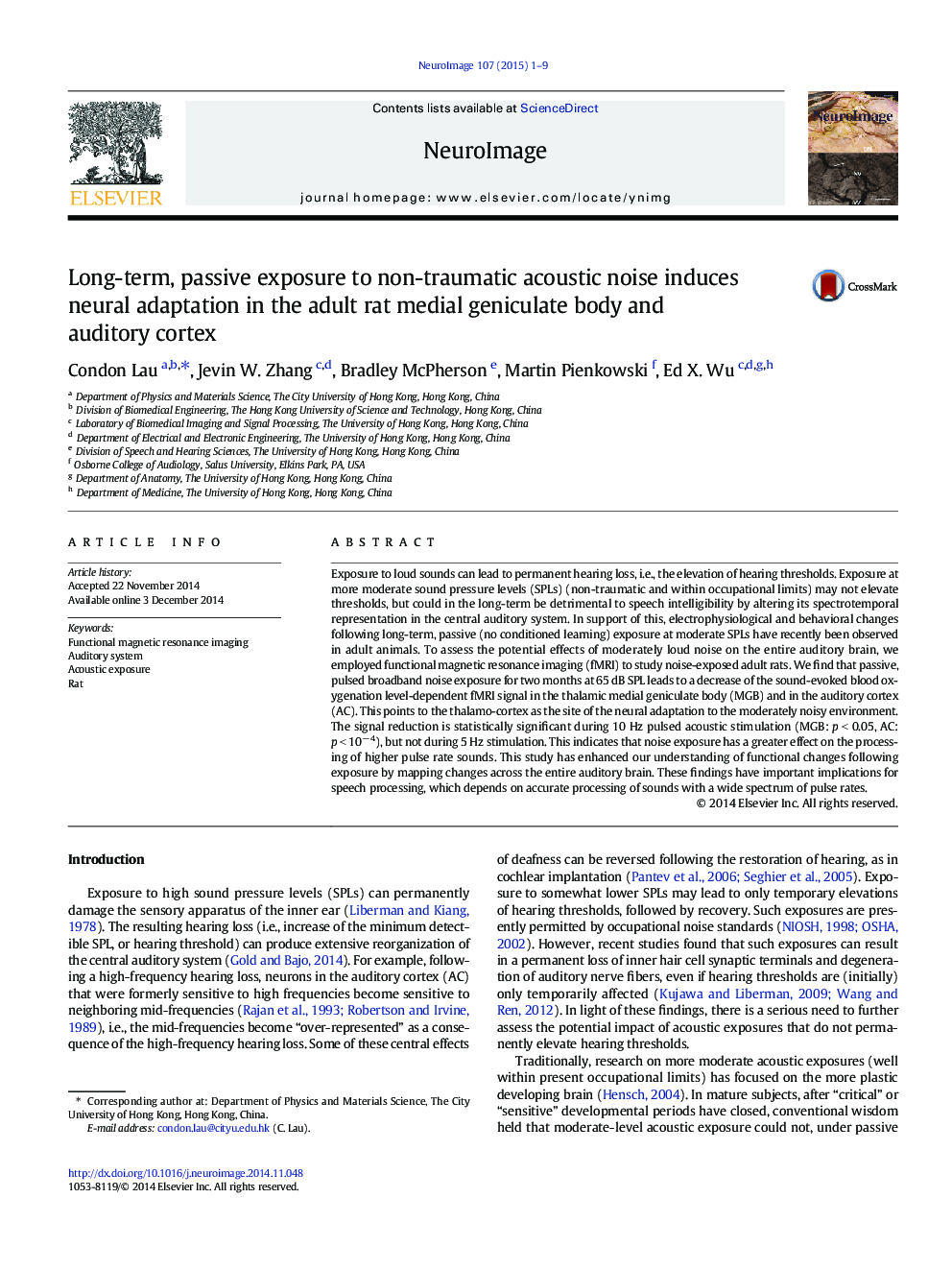| Article ID | Journal | Published Year | Pages | File Type |
|---|---|---|---|---|
| 6026141 | NeuroImage | 2015 | 9 Pages |
â¢Chronic exposure to moderate intensity acoustic noise may be detrimental to hearing.â¢Performed fMRI of rat chronic noise exposure model using pulsed sound stimulationâ¢High pulse rate stimulation reduces fMRI signals in MGB and AC of exposed subjects.â¢No significant differences in lower auditory centersâ¢No significant differences using low pulse rate stimulation
Exposure to loud sounds can lead to permanent hearing loss, i.e., the elevation of hearing thresholds. Exposure at more moderate sound pressure levels (SPLs) (non-traumatic and within occupational limits) may not elevate thresholds, but could in the long-term be detrimental to speech intelligibility by altering its spectrotemporal representation in the central auditory system. In support of this, electrophysiological and behavioral changes following long-term, passive (no conditioned learning) exposure at moderate SPLs have recently been observed in adult animals. To assess the potential effects of moderately loud noise on the entire auditory brain, we employed functional magnetic resonance imaging (fMRI) to study noise-exposed adult rats. We find that passive, pulsed broadband noise exposure for two months at 65 dB SPL leads to a decrease of the sound-evoked blood oxygenation level-dependent fMRI signal in the thalamic medial geniculate body (MGB) and in the auditory cortex (AC). This points to the thalamo-cortex as the site of the neural adaptation to the moderately noisy environment. The signal reduction is statistically significant during 10 Hz pulsed acoustic stimulation (MGB: p < 0.05, AC: p < 10â 4), but not during 5 Hz stimulation. This indicates that noise exposure has a greater effect on the processing of higher pulse rate sounds. This study has enhanced our understanding of functional changes following exposure by mapping changes across the entire auditory brain. These findings have important implications for speech processing, which depends on accurate processing of sounds with a wide spectrum of pulse rates.
